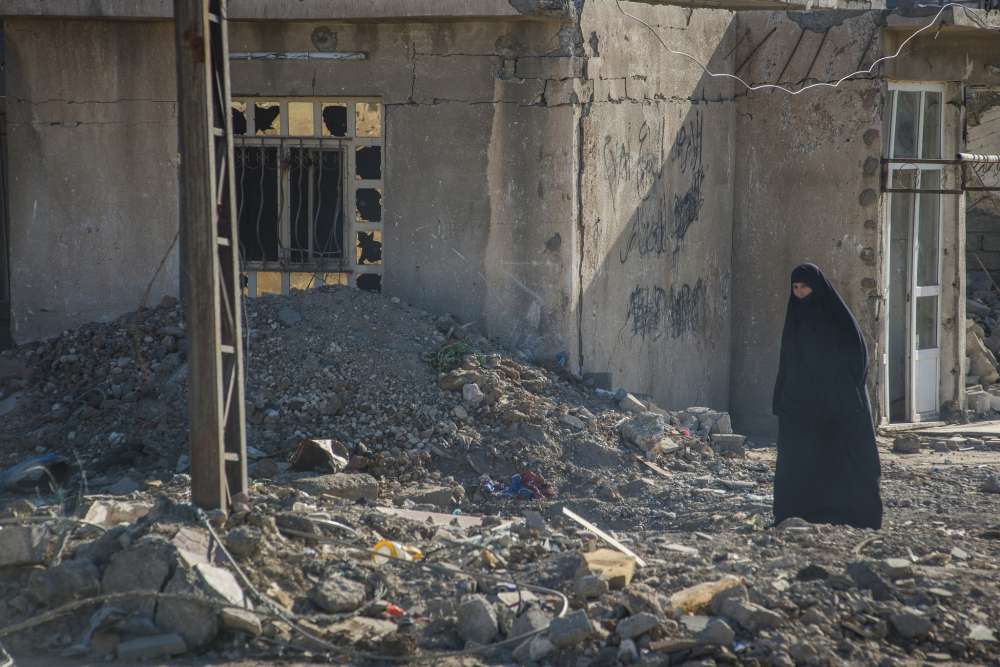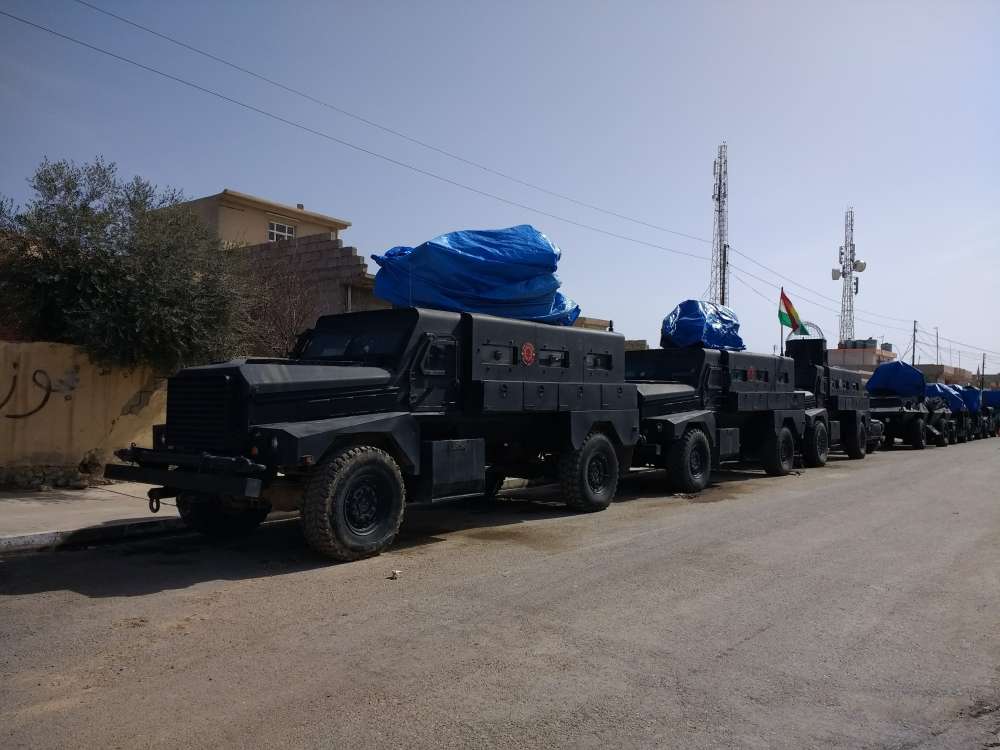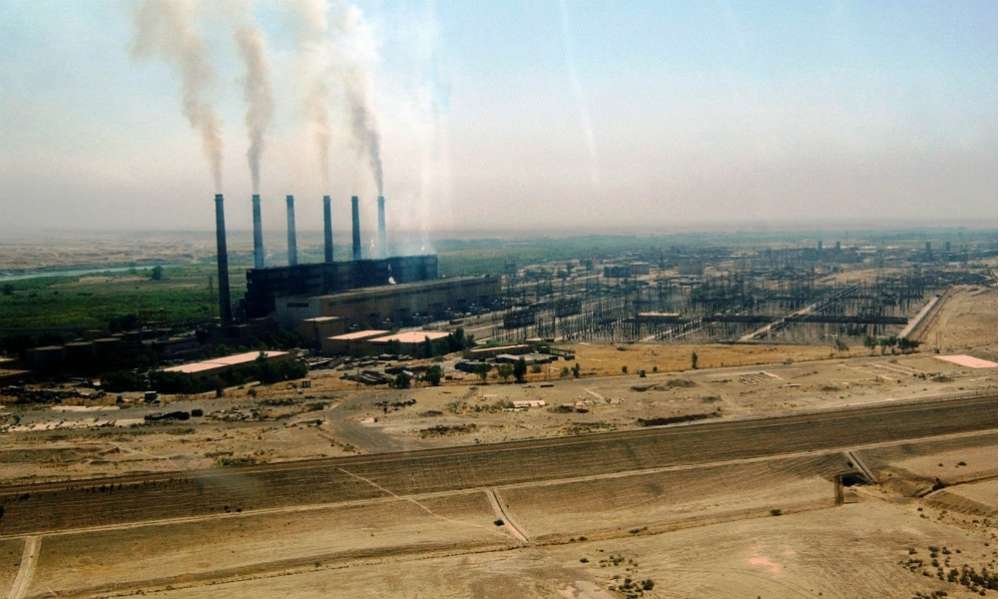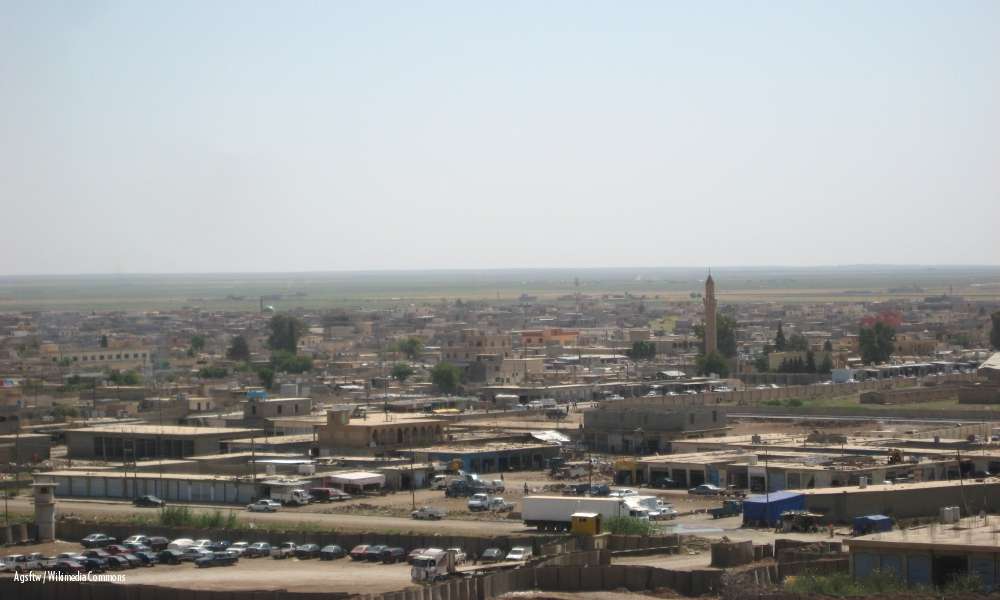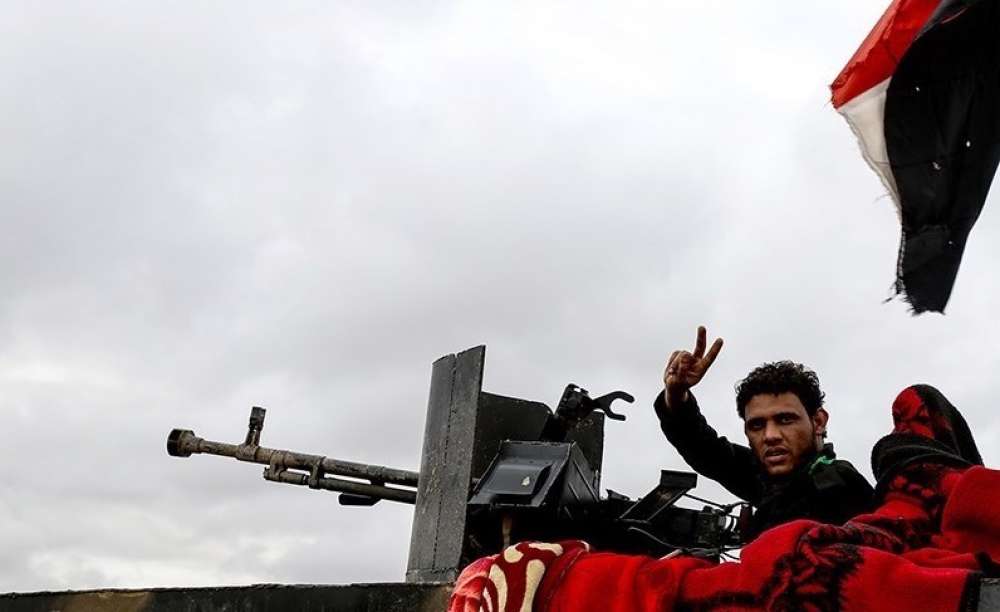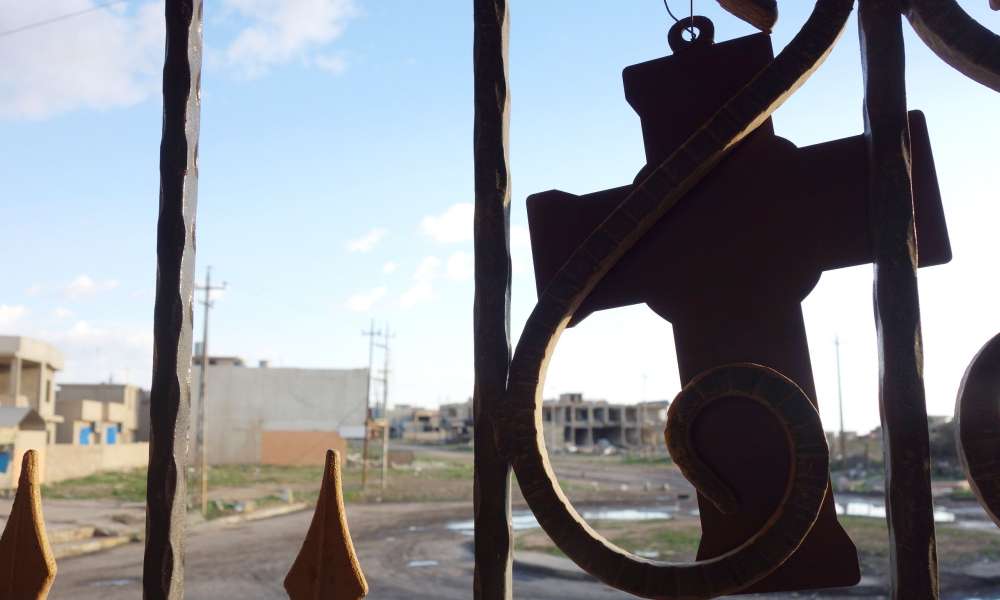Iraq after ISIL: Qayyara
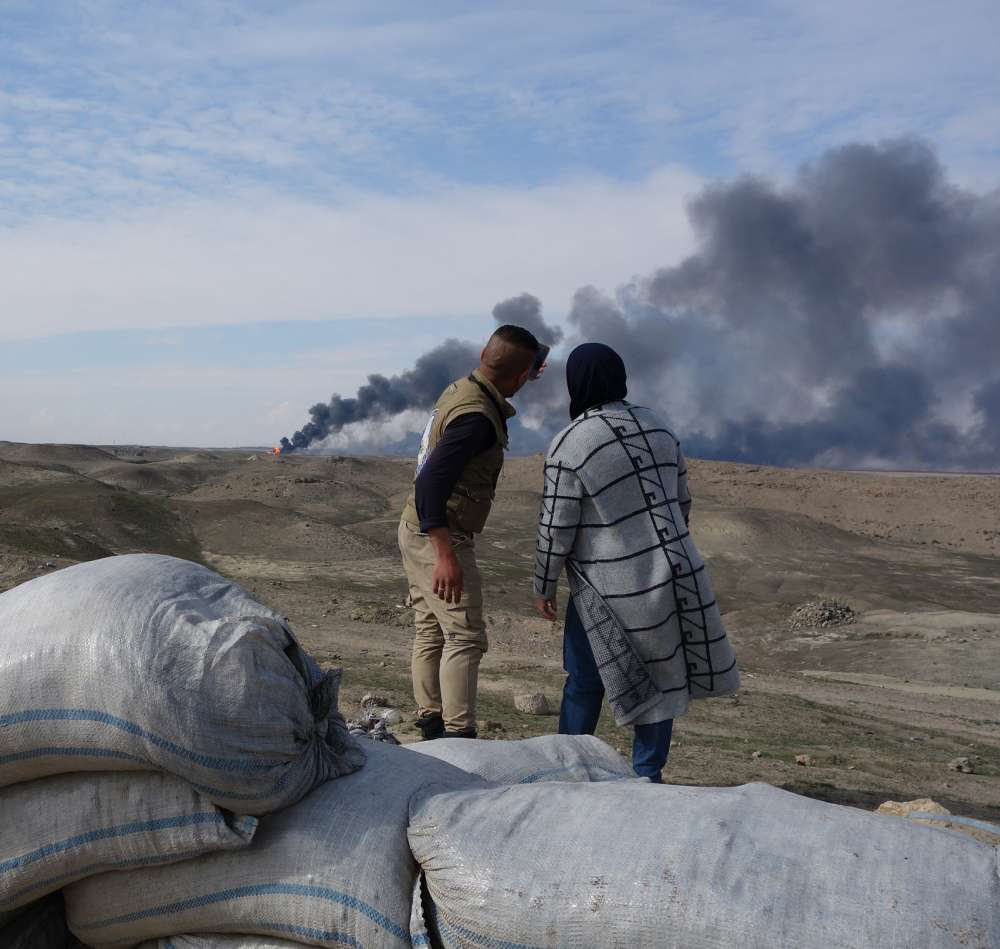
US-supported and ‑trained Sunni tribal PMF have played a larger role in this relatively stable Sunni area south of Mosul, but tribal revenge attacks, Shi’a PMF on the outskirts, and a recent ISIL takeover of a liberated town illustrate the uneven control and stability even in safe and politically uncontested areas.
This research1 summary is part of a larger study on local, hybrid and sub-state security forces in Iraq (LHSFs). Please see the main page for more findings, and research summaries about other field research sites.
Qayyarra is a medium-sized subdistrict of Mosul that lies 60 kilometers south of the city. It has a predominantly Sunni Arab population of approximately 120,000.2 Much of the subdistrict is rural and the largest urban center, Qayyara city, has a population of approximately 23,000. Qayyara was liberated relatively early in Ninewa governorate, in August and September 2016, and has remained stable since then. As a result, it has hosted some of the largest camps for IDPs from other parts of Ninewa, including the Jeddaa and Qayyara Airstrip camps in Qayyara city and the Hajjj Ali camp. By April 2017, these three camps were home to some 72,000, 52,000, and 45,000 IDPs, respectively.3 In addition, during the period between Qayyara’s liberation (October 2016) and Mosul’s full restoration to government control, many governorate-level offices and local representatives of Baghdad ministries relocated to Qayyara.
Qayyara faces relatively few issues with local and hybrid security forces thanks to its largely homogenous Sunni population, relatively stable security situation, and the Federal Police’s overall control. However, the subdistrict is interesting because locally-recruited, Sunni Arab PMF, who are trained and supported by the United States and other Coalition members, are more active there. The future integration of these forces into the local security structure may be indicative of how the PMF will affect broader, Sunni-Shi’a dynamics in Iraq. Qayyara also faces some of the same burgeoning challenges in reconciliation and ISIL families as do other parts of Iraq. However, community leaders and political decision-makers, rather than different mobilization groups or security forces, appear to be driving these issues.
Key Facts: Qayyara
Population: 120,000
Ethnic composition: Majority Sunni Arab
Date taken by ISIL: June 2014
Date reclaimed: August-October 2016
Ground forces engaged in retaking: Iraqi Special Forces (notably Golden Division), the Iraqi Army and Federal Police
Overall control: Federal Police, supported by some returning local police
LHSFs present: Sunni TMF in a supporting, “hold” role
Key Issues:
- Future role of US/Coalition-trained, local Sunni TMF
- Reconciliation and so-called “ISIL families”
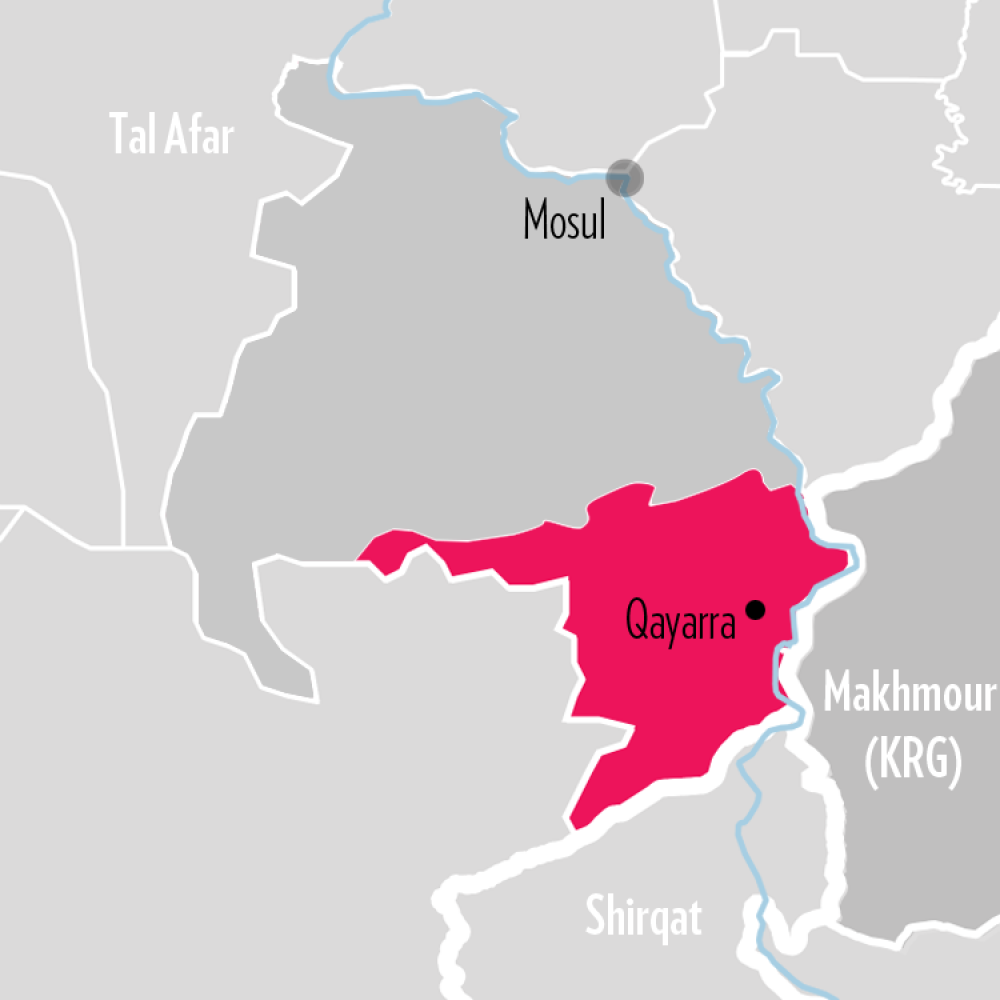
ISIL Takeover and Expulsion
The communities in and around Qayyara came under ISIL control in June 2014. According to residents and local officials, a small minority of the mostly Sunni Arab population had longstanding ties with Islamic extremist groups like Al Qaeda and joined ISIL when the group seized Mosul. Moreover, certain villages or communities, such as Shura community, north of Qayyara, were known as ISIL strongholds. However, other towns, villages, and tribes (e.g., in Hajj Ali in the south and parts of Qayyara city) put up strong resistance. They did so due to longstanding rivalries with ISIL-affiliated individuals and tribes or because significant members of the population or tribe had worked in local government or policing. This latter group was directly targeted by ISIL.
As observed in other areas under ISIL’s rule, many interviewees reported seeing former policemen in the community rounded up and killed in the first months of the group’s occupation.4 The main stadium in Qayyara city, at the urban center’s southern entrance, was reportedly the site of public executions and punishments. All the police and detention facilities in Qayyara were destroyed, along with many other official government buildings, including the mayor’s office in Qayyara city. ISIL also torched, looted, or placed explosive devices in the homes of their opponents and of former police and government employees. Although ISIL particularly targeted people associated with the government and police, they also retaliated widely against villages that resisted their rule and which had family ties to tribal elders who opposed ISIL or were established rivals of its members. In the villages visited in Hajj Ali and Shura district that were affiliated with rival tribes or with former Iraqi government employees, nearly every home bore signs of ISIL occupation or destruction. Most residents directly affiliated with the government or security forces fled, but many others stayed behind, particularly in Qayyara city. Humanitarian observers estimated that 80% of the villages and small communities surrounding Qayyara (some 70 to 80 villages) fled under ISIL rule. Qayyara city, however, witnessed the inverse: approximately 80% of the population remained, and many people from surrounding communities fled there. This counter-flow, together with a lack of access at the time, makes it difficult to track exact displacement patterns under the period of ISIL control.
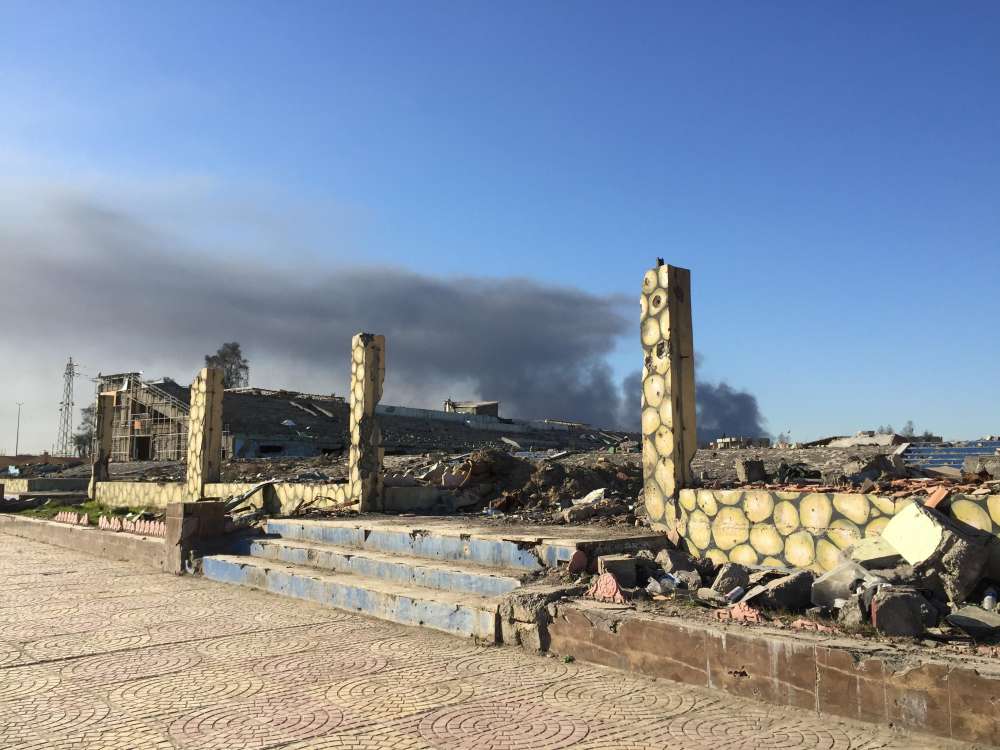
ISIL’s Retreat and Infrastructure Damage
Qayyara was liberated on August 25, 2016.5 Although some damage occurred during ISIL’s occupation, much of Qayyara’s serious infrastructure damage occurred during the group’s expulsion. As ISIL retreated, mostly north into Mosul or west to Tel Afar, it sabotaged 18 of 50 oil wells and other strategic infrastructure in and around Qayyara, including a sulfur mine and processing plant and the local oil refinery.6 It set explosive charges and fires in civilian homes and targets across the city, including the main hospital. In certain geographic choke points, ISIL fighters systematically tore up the roads using heavy equipment to slow the advance of Iraqi forces.
ISIL’s tactics in retreat took a severe toll on the remaining local population: the group’s members forced hundreds of civilians from certain villages or subdistricts to accompany them as human shields when they retreated into Mosul in August 2016. One elder from Hud village said that ISIL forcibly displaced some 150 families from the village when they retreated. He said that, as of March, most of the captured families had been released and had returned to Hud but that 93 residents, including his daughter, had not yet returned. Hud residents believed that some of the captured had been killed but that others were being held in west Mosul, which was still under ISIL control at the time.
The Coalition forces caused equal amounts of damage during the fight to expel ISIL. Damage to government buildings, homes, and other infrastructure in Qayyara appeared to be caused by aerial strikes, artillery, and fire from the advancing Coalition forces. Most described the Coalition strikes as accurate, hitting homes or buildings occupied by ISIL; nonetheless, they left behind significant wreckage (albeit not to the same level as other areas of Ninewa governorate). In Qayyara city center, landmarks like the stadium are a crumbling eyesore, and in some neighborhoods as many as a quarter of the homes have been reduced to cement block detritus. In one subvillage in Hajj Ali, which saw equal damage from ISIL and Coalition airstrikes, every third home was destroyed or rendered effectively unuseable.
The research team also received reports of Coalition members, notably the Federal Police, looting areas or damaging buildings seized from ISIL. For example, in Sof at-Tuth, a community outside Qayyara city, locals expressed that much of the damage to local buildings was due to looting by the Federal Police.
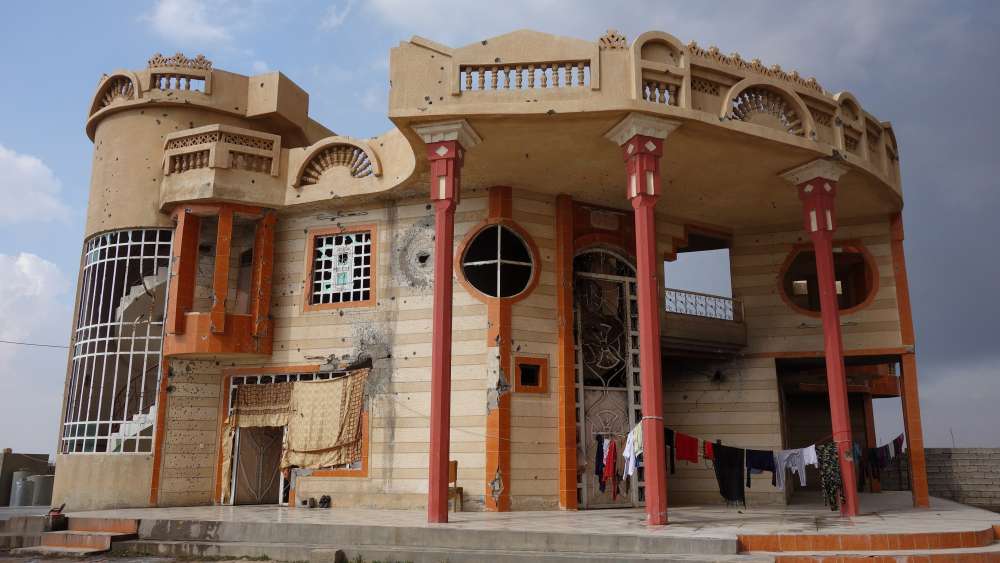
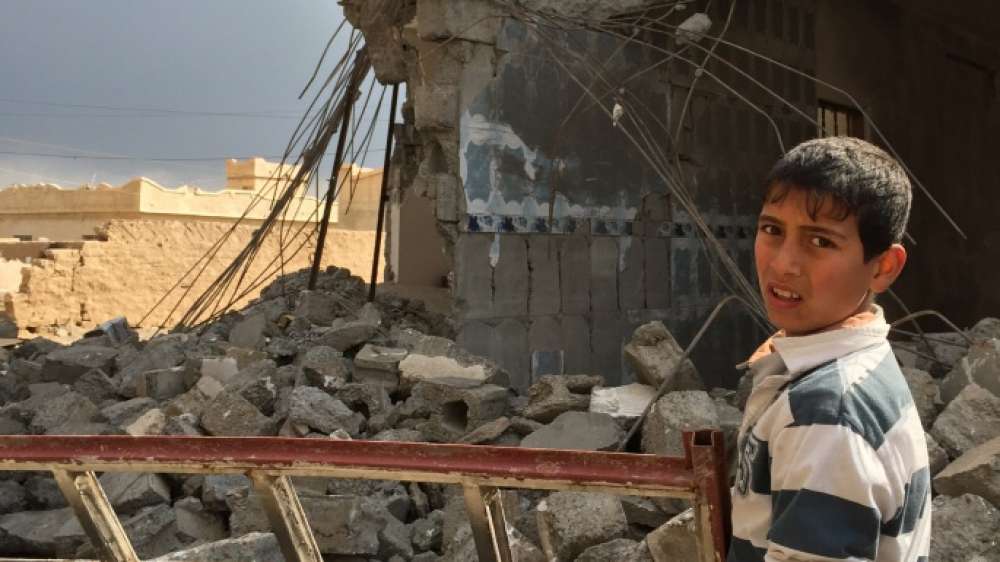
Security Forces in Qayyara – Roles and Responsibilities
The ground forces that pushed ISIL out of Qayyara in August 2016 were led by the Golden Division, the Special Forces, the Iraqi Army, the Federal Police, and a smaller number of tribal forces that followed in their wake as “hold” forces. As with other parts of the campaign, these ground forces received significant Coalition air support. Since the initial expulsion of ISIL, the Federal Police have held primary control of Qayyara and have only delegated security tasks to small numbers of tribal forces and returning local police. One official estimated that in the greater Mosul district, which includes Qayyara, there used to be 32,000 police; however, as of March 2017, only 6,000 were actively reporting for duty. Of these, many were working unofficially and still not receiving salaries. Because of ISIL persecution, many who had previously served as police in the area had fled or been killed, and those who remained did not rejoin.
Given Qayyara’s largely Sunni make-up, U.S.-backed tribal forces – predominantly Sunni and known locally as Hashd al-Asha’iri or tribal Hashd – play a more significant role in this area than elsewhere in Iraq, although they constitute a very small fraction of the overall forces.7 For example, according to Coalition tracking reports, approximately one-third of the 16,000 approved and trained tribal forces – that, is roughly 5,000 – were assigned to the Qayyara area at the time of research (from the end of February to March 2017).8 It is difficult to estimate how many of the 5,000 were actively manning checkpoints or carrying out other security tasks, particularly given reports of registered tribal forces who were not participating in assigned duties. However, alongside fighters who were officially registered and paid, most TMF units oversaw additional, unregistered forces (who were also untrained and unpaid), which may have balanced out some of the absenteeism. In some cases, the number of unregistered forces was nearly equal to the number registered.
Tribal leaders interviewed said that to get their forces registered, they had reached out, (typically to contacts in Baghdad) to ask for forces once they heard about the program. After submitting background information and attestations to the character of the forces nominated, they were given an allocation for a certain number of fighters and approval of a certain number. All those interviewed said they had asked for a higher number than the allocation they were given, and that they had a list of more local men ready to enlist. This general process was confirmed by those involved in managing the TMF program. As in the rest of Ninewa, the number of tribal forces assigned to any given unit or tribal leader is limited by design. Most tribal leaders were allowed to have 100 – 300 fighters under their command. An exception was the forces fighting under the tribal leader Sheikh Nazam, who was allocated 630 fighters at the time of research – the largest authorized Hashd al-Asha’iri groups.9 This created different local dynamics than perhaps any other area around Qayyara (as will be discussed below).
Despite the relative significance of the tribal forces in Qayyara, they are still in a subordinate and auxiliary role largely because of their small numbers. The role these forces have played appears to hew mostly within the original intent mapped out for them. They act primarily as auxiliary hold forces drawn from local communities, in which they provide support on minor security tasks. Although some tribal leaders boasted in interviews that their forces helped liberate Qayyara, in reality these groups were largely sidelined and delegated small, auxiliary tasks once areas had been retaken. Those working with the Coalition forces and a handful of tribal leaders took on a more aggressive role in liberating communities (particularly their own areas, but not exclusively so). However, these cases constitute an exception, not the rule, and such aggressive steps were often taken under their own auspices, rather than in coordination with ISF and the Coalition. Many local tribal forces contributed to the liberation of areas by identifying areas or particular buildings held by ISIL members. Moreover, they likely provided information on individuals who were later detained by other forces (although the development of lists for who was to be detained remains murky).
At the time of research, most of the tribal militias were used to man checkpoints running along the main road stretching from Qayyara city to Hamam al-Alil, which then goes on toward Mosul. Tribal forces belonging to local tribal leaders also provided basic security and guarded local checkpoints within some subdistricts or smaller communities, including those visited in Hud, Hajj Ali, and Shura. In Shura district, a tribal force belonging to a local sheikh shared control with the federal police. In this geographically-spread district, which had previously served as a main stronghold for ISIL, security was extremely tight.10
Although Shi’a PMF forces have been largely absent from Qayyara, they have had some presence in the area due to their close affiliation with ISF and the Federal Police and their support for Coalition advances just north and west of Qayyara. During the liberation of Qayyara, the Shi’a PMF were on the area’s perimeter and certainly transited through it en route to other areas, such as Tal Afar to the west.
During the research period, researchers asked checkpoint guards on the road from Qayyara city to Hamam Ali about their origin and affiliation. While these checkpoints are typically manned by local, tribal Hashd or Federal Police, several of the individuals at Federal Police checkpoints were from southern Iraq and claimed an affiliation with the Shi’a PMF. The team also encountered reports of Shi’a PMF intermittently engaging in camp security and vetting responsibilities and participating in detention operations (immediately below). Such reports contradicted official statements – all of which repeated that the PMF had no assigned duties in Qayyara – and most of the research team’s observations in Qayyara. The most likely explanation for these contradictions is that individual PMF forces were sometimes called to fill in for, or support, Iraqi forces in Qayyara, albeit unofficially, due to the close relationship between the PMF and Iraqi forces11 and the former’s proximity to Qayyara. For example, the roster for a checkpoint may change on a weekly, and sometimes daily, basis according to available manpower. At times, the manning of a checkpoint is based on who can get transport, which is typically not organized. Many checkpoint forces said they were responsible for walking, getting a taxi, or otherwise providing their own transportation. Thus, a checkpoint nominally manned by the Federal Police might come up short one day in manpower, and PMF supporting the Federal Police in nearby Hamam al-Alil might step in to fill the gap. In essence, although there has been no top-level decision to deploy the Shi’a PMF in Qayyara, given local sensitivities in this largely Sunni community, their close proximity to neighboring districts creates plenty of opportunities for their participation to bleed over.
Although this overlap appears relatively harmless when it comes to manning a checkpoint, it may have caused significant transgressions of the PMF’s intentionally constrained role and violated Iraqi law. Some Federal Police reported that when they learn of an alleged ISIL affiliate who remains in Qayyara, they find it easier to alert the nearby Shi’a PMF who control areas northwest of Qayyara to pick the individual up, rather than obtain formal detention papers. It was not possible to corroborate these accounts with Iraqi officials. However, aid workers and IDPs in Jedda camp also reported instances of the Shi’a PMF entering the camps to detain or recruit individuals. Several sheikhs and mukhtars also noted reports of what appeared to be extrajudicial killings or punishments in which individuals (in most cases suspected of ISIL affiliation) picked up by the PMF forces were found dead the next day.
One interesting distinction compared to other areas surveyed is that, at least at the time of research, there was not significant intermingling and co-option between Sunni TMF groups and Shi’a PMF. For example, in other parts of Ninewa and even more prominently in Salah ad-Din, a common pattern was for larger Shi’a PMF to recruit and stand up local Sunni forces in an area or to co-opt and begin supporting existing local Sunni tribal forces (with varying degrees of control). (See Mosul, Shirqat and Baiji summaries). This was not a prominent pattern in Qayyara, likely because of the relatively slim presence of PMF, and less PMF interest in exerting greater PMF control over Qayyara relative to other areas of Ninewa. The fact that tribal forces in Qayyara were receiving support relatively sufficient for their needs from the TMF program (prominently supported by the US) was also likely important. However, this would be an area to watch in the future. If Coalition support to the TMF diminished as they became more integrated into the larger PMF – a point of discussion – the local tribal forces in Qayyara, along with those in other areas, might begin to look for other backers. One Coalition official engaged with the TMF in Ninewa said that he observed a ratcheting up of demands and an “arms race” among local security forces across Ninewa, with each trying to get more aggressive, offensive weapons, and larger forces. Ultimately, he said that the Coalition would not support provision of weaponry or force levels that would not be necessary for the primary aim of these forces – neighbourhood patrol. At that point, Coalition support and Baghdad salaries could easily be outdone by some of the better funded, better armed, and less restricted Shi’a PMF forces.
ISIL Families and Reconciliation
One of the greatest challenges in many liberated areas is the prospect of reconciliation and the reintegration of residents who may have been affiliated with ISIL. In many areas, so-called “ISIL families” were forced out of their communities, often into local IDP camps. These forced displacements were happening at the time of research in Qayyara. Angry community members took matters into their own hands, and there were multiple reports of unknown community members throwing grenades into the homes of families they associated with ISIL to make them leave. One tribal sheikh interviewed suggested that approximately 20 families had experienced such violence. He also noted that a recent meeting of tribal elders, also attended by local government officials, determined that ISIL families should be expelled and forced into IDP camps. Another elder said that the mothers, wives, and other relatives of alleged ISIL supporters or collaborators had already been sent to live in the Jeddah IDP camp, which is located in Qayyara city. “Reconciliation with Daesh will never happen. What they did is not human. In Qayyara, they [Daesh] took their families with them. The only people left are more distant relatives…aunts, second cousins.
We deported those people to the Jeddah camps… Just the females – mothers, wives, daughters.” The tribal affiliations are often determinative in these cases. One elder noted that where there had been inter-marriage, for example between a woman from a non-ISIL-affiliated tribe into a tribe that was affiliated with ISIL, the wife or children in that family might not be forced to leave the community if her relatives stood up for her. What role do tribal forces play in such decisions? In most cases (perhaps excepting Hajj Ali), it does not appear that local or national security forces initiated the decision to remove alleged ISIL affiliates, but they may help in enforcing such community decisions. In addition, although tribal forces were recruited from across the Qayyara area, from a range of different families and sub-tribes, they are not recruited from what locals consider to be “ISIL families.” With these non-ISIL affiliated tribes in control, and the others out, this could contribute to a balance of power that overall meant less protection or respect for the rights of those affiliated with tribes or families that supported ISIL, perhaps lending toward an environment of greater reprisals and retaliation.
Attitudes toward Locally-Drawn Forces
A central aim of this research project is to assess whether communities feel more secure and comfortable with forces drawn from nearby areas and how this local solution to local security problems affects overall security and stability. If any case study exists of the strengths and drawbacks to this local solution, it is Hajj Ali. In other communities, local Sunni forces tended to be small in number and played a limited support role for the Iraqi forces in control, which in the case of Qayyara were primarily the Federal Police. Hajj Ali was an exception to this pattern. The head of the local tribal PMF, Sheikh Nazam, commanded a significant local force: over 600 officially registered, and more unofficially affiliated fighters, compared to an average of 100 for most Sunni TMF. Moreover, he used it to exert almost total control, with reportedly very little Federal Police intervention. Most residents in Hajj Ali appeared to support this level of autonomy, but to the extreme detriment of the minority who did not support Sheikh Nazam. For the residents of Hajj Ali, the Sheikh’s tribal fighters were not only the sole force around. Having a father or son accepted into the force was also a rare source of livelihood. In interviews, residents were enthusiastic about the Sheikh’s efforts for the community (as they tended to frame it) and the participation of locals in the villages’ security. However, this unanimity was disturbed by the fact that any minority voices were likely expelled, or worse. There have been reports of the local tribal force abusing, harassing, or deporting (to IDP camps) community residents suspected of supporting ISIL and opposing Sheikh Nazam. Such forced displacements are likely one of the more extreme treatments of so-called “ISIL families” in the Qayyara area (see sidebar).
Most other areas of Qayyara did not experience such a strong pattern of local control. The rest of the region saw fewer tribal forces that were clearly subservient to the Federal Police. However, residents in other areas of Qayyara did express some form of preference for “local forces,” even if in a minor support role. Although all interviewed said they had no experience with the Shi’a PMF (again, who are largely absent in Qayyara), many suggested they would favor local tribal fighters over these forces from outside Qayyara if given the choice. One local council member said he had seen the destruction and abuses the Shi’a PMF perpetrated in Sunni areas like Ramadi and Falluja on television, and for that reason he preferred the local Sunni forces: “At least the local [tribal] Hashd are our sons. We can draw a line with respect to them. We can control them if something happens. But if [the Shi’a] Hashd ash-Shaabi were here, there would be nothing we could do to control them.” He also noted that the Shi’a PMF are too powerful a military force to be controlled. Another IDP, interviewed in one of the camps, was from an area known as an ISIL stronghold and said he feared that if the Shi’a PMF were in control, they would take revenge on families who stayed behind under ISIL.
While such comments suggest that residents preferred local militia forces to fighters from outside their governorate and/or sectarian communities, the prevailing view was that it would be best for Iraqi forces to ensure the rule of law. Residents and officials alike suggested that, overall, they would prefer official Iraqi forces (i.e., local police, the Federal Police, and Iraqi military) to the continuing presence of popularly-mobilized, semi-irregular security forces. Most pointed to the need to mobilize additional forces quickly in a time of crisis but expressed that the Hashd (Sunni or Shi’a) should not remain over the long-term. Several officials said that the number of tribal forces should be kept low and that they should be demobilized in the future because they tend to be disorganized and untrained, with weak command and control. One official noted that the incidents of violence and criminality by tribal forces would have been harder to address and contain if their numbers had been larger. Most of the reports of criminality involved petty theft, but there have also been incidents of fighting between different tribal forces and of tribal forces taking the law into their own hands and settling scores.
Community members too, almost uniformly (outside Hajj Ali), expressed a preference for regular law and order implemented by uniformed police or the ISF. For example, one man from a village near Qayyara city explained, “I prefer the Federal Police and the Iraqi Army because they are more organized and have the ability to control our area.” He also noted that he suspected the tribal forces of being corrupt or having ulterior motives. Another IDP from as-Shura village, who still lived in the camps, similarly suggested that the local tribal forces were not large enough to protect the population if they returned. “I prefer the Federal Police and the Iraqi Army to be in our areas because they know how to control them, and it is their duty to do so,” he said.
In interviews, community leaders favored demobilization or the recruitment of eligible tribal militias into the Iraqi forces in the future. One local council member and tribal elder, suggesting his preference for a local police force, said, “It’s better to dissolve tribal Hashd altogether…even though some are friends and relatives…They are tribal and follow a tribal system. They cannot apply orders. Some of these guys don’t even have a kindergarten education.” Another local mukhtar acknowledged the need for popular mobilization to deal with the crisis, but he worried about its long-term effects: “In the future, militarizing society is not the answer…It would be best if they were completely disbanded.” He noted, however, that while the demobilization of the Sunni PMF would probably be possible, it would be more challenging with the “Hashd al Janoub” or the PMF from the south (the Shi’a Hashd): “They sacrificed a lot, so it’s hard to tell them to lay down their weapons. The tribal PMU just held their ground – not a big sacrifice – so they could be let go with a scratch of the pen.”
Post-Liberation Challenges
At the time of research, roughly six months after the Coalition forces had regained control, the security situation was largely stable. A sense of normal life had returned in most of Qayyara, although the area faced significant challenges: infrastructure damage, lack of basic services, and the restoration of the regular rule of law. With Mosul still under active operations, many authorities that would normally operate from the region’s main city had relocated to Qayyara.
All the government offices, including the mayor’s office, the chief of police, and local representatives of Baghdad ministries, had set up temporary operations in homes that were presumed to belong to former ISIL members. However, many of these sites were inadequate. The strongest illustration of this problem is the local detention facility, which was located in a multi-house compound that was partially bombed by Coalition forces. It was being used as the local detention facility because ISIL had destroyed all other detention facilities. However, the compound was not designed to hold the number of detainees arrested in the wake of ISIL’s expulsion. The facility’s overcrowding and poor conditions were so severe that multiple interviewees flagged them as major and ongoing challenges, and local officials repeatedly asked officials in Baghdad for help in clearing or better housing the detainees. A Human Rights Watch visit to the detention facility found massive overcrowding, with 378 detainees crammed into a six-room house in one part of the facility.12
A temporary, floating bridge, which was replaced by a more permanent structure in June 2017, ensured access in and out of Qayyara. Moreover, while power, if irregular, had been restored in Qayyara city, many of the smaller, surrounding villages and communities had no water or electricity.13 This lack of services, together with destroyed homes in some of the communities, constituted the main deterrent for IDPs to return to their home villages. The 18 oil wells ISIL set ablaze, with another 16 damaged in fighting, were difficult to bring under control, and the fires were not all finally capped until early April 2017.14 During the period of research, thick black smoke hung in the air, and white sheep appeared black due to the accumulated pollution. IDP camps and health facilities reported numerous respiratory illnesses, which had been even more acute during the period when the sulfur facility was leaking noxious gas.
Nevertheless, overall return levels to Qayyara were high and increased as the area stabilized. IDPs interviewed in Qayyara camps – many of whom come from the surrounding areas – tended to cite the lack of electricity, water, and basic services in their areas as the main reason they had not yet returned. Some felt that security in the area had not been fully restored, noting that tribal forces were not able to secure all areas. However, this concern appeared to be a secondary, rather than primary, factor inhibiting return in most cases.15 As noted in the boxed text on reconciliation, many of the “ISIL families” who were threatened or forcibly displaced from their communities ended up in the Qayyara IDP camps; however, none of those interviewed openly acknowledged being the victims of such treatment.
At the time of research, the security situation appeared to be stable and improving. However, in early July 2017, ISIL forces reportedly retook the village Imam Gharbi, only seven kilometers outside Qayyara city. The village was quickly retaken, on July 20, 2017, by a joint operation from Ninewa and Salah ad-Din commands. Nonetheless, ISIL’s rapid retaking of a village far behind the frontlines and close to an urban center may suggest continued instability, even in seemingly secured places. If such threats persist, then the atmosphere of security crisis and shortfall, which originally led to the mobilization of militias like the tribal forces, is likely to endure. As a result, these forces may remain in place for an extended period of time.
References
1 Research was conducted by a small team in Qayyara over the course of February and March 2017 and included interviews with local officials, members of the Tribal Mobilization Forces (TMF), tribal elders and mukhtars, and local civilians, including in the local IDP camp. Site visits were conducted in Qayyara city, in smaller villages surrounding it, in villages in the Hajj Ali and Shura subdistricts, and along the main road from Qayyara city to Hamam Ali. Mahmoud Zaki contributed significantly to the research and analysis.
2 Although Qayyara is a subdistrict, because of geographic distance and because Mosul was effectively cut off by ISIL occupation for much longer, Qayyara is often treated as a separate district, at least in the post-ISIL period.
3 Information suggested by IOM displacement tracker and interviews with camp managers.
4 For more documentation of such persecution in other human rights and press reporting, see, The Office of the United Nations High Commissioner for Human Rights, “Report on the Protection of Civilians in the Armed Conflict in Iraq: 1 May – 31 October 2015,” October 2015, 8 – 10, http://www.ohchr.org/Documents/Countries/IQ/UNAMIReport1May31October2015.pdf; “Army Major Recounts Life Under ISIL In Hajj Ali,” Yalla Iraq, September 18, 2014, 6, https://yallairaq.com/en/news/army-major-recounts-life-isil-haj-ali/.
5 Qayyara city was liberated on August 25, 2016, but areas north of Qayyara were liberated later. For example, Hud village, which is just north of Qayyara and on the outskirts of the city, was not liberated until September 17, 2016. On October 17, operations began to liberate Mosul and the areas just south of Mosul, north of Qayyara.
6 Many of the oil wells were reportedly destroyed on or around August 21, 2016, as Coalition forces began advancing on Qayyara city. Ruaidhrí Giblin, “Retreating ISIL Fighters Leave Dark Pall in Their Wake in Iraq,” The Irish Times, October 1, 2016, http://www.irishtimes.com/news/world/middle-east/retreating-isis-fighters-leave-dark-pall-in-their-wake-in-iraq‑1.2812287. The destruction at the al-Mishraq sulfur mine and processing plant, which is further north toward Mosul, took place on October 22, 2016. Ben Kesling and Gordon Lubold, “Islamic State Burns Sulfur Stocks near Mosul, Creating Hazard for Troops, Locals,” Wall Street Journal, October 22, 2016, https://www.wsj.com/articles/u‑s-troops-in-iraq-don-gas-masks-as-islamic-state-sets-fire-to-industrial-waste-1477130101.
7 It is worth noting that proportionately more TMF forces were active in Qayyara because of the status and nature of other areas in Ninewa. The largest Sunni population center, Mosul, was still being liberated (west Mosul) or had only recently been liberated (east Mosul); thus, TMF forces may not have been fully functional in those areas. In addition, because of its urban nature, those engaged in the TMF program and local leaders suggested it was not as conducive to tribal mobilization as an area like Qayyara, which is more rural and in which tribes play a greater role in social structures.
8 This is based on tracking conducted by the US Diplomatic Mission to Iraq, and shared with the members of the research study.
9 This is based on tracking and information provided by the US Diplomatic Mission to Iraq, and shared with the members of the research study.
10 Unlike other areas visited, there were frequent checkpoints inside the district that strictly enforced identity checks. Entry into the district required special authorization from the federal police and was scrutinized at multiple points.
11 Historically, there have been close connections and a revolving door of membership between the Iraqi forces, particularly the federal police, and some Shi’a PMF groups, notably the Badr Brigade. For a description of leaders of PMF groups, notably Badr, and their influence on Iraqi army and police forces, see Dylan O’Driscoll and Dave van Zoonen, The Hashd al-Shaabi and Iraq Subnationalism and the State (Erbil: Middle East Research Institute, 2017), http://www.meri‑k.org/wp-content/uploads/2017/03/PMF-Report‑0.2.pdf; L. Morris, “Appointment of Iraq’s New Interior Minister Opens Door to Militia and Iranian Influence,” Washington Post, October 18, 2014, https://www.washingtonpost.com/world/appointment-of-iraqs-new-interior-minister-opens-door-to-militia-and-iranian-influence/2014/10/18/f6f2a347-d38c-4743 – 902a-254a169ca274_story.html.
12 Human Rights Watch, Press Release: Iraq: Hundreds Detained in Degrading Conditions: Over 1,200 ISIL Suspects in Filthy Overcrowded Jails (New York: Human Rights Watch, 2017), https://www.hrw.org/news/2017/03/13/iraq-hundreds-detained-degrading-conditions.
13 These areas had been earmarked for reconstruction assistance by the UNDP and other humanitarian organizations, but, given the scale of the damage, the immediate restoration of services was not possible in all areas.
14 “At Last, Burning Qayyarah Oil Wells Brought under Control,” Rudaw, April 2, 2017, http://www.rudaw.net/english/middleeast/iraq/02042017; Gareth Davies, “Oil Wells Set on Fire by ISIL are Still Burning Four Months after the Terror Group Torched Them… and the Soot has Turned Mosul’s Sheep Black,” Mail Online, December 23, 2016, http://www.dailymail.co.uk/news/article-4062970/Oil-wells-set-fire-ISIL-burning-FOUR-MONTHS-terror-group-torched-soot-turned-Mosul-s-sheep-black.html.
15 Interviews with workers in the IDP camps supported this overall summary. While security was a concern, IDPS often cited livelihood and living conditions as their primary reasons for refusing to return.
